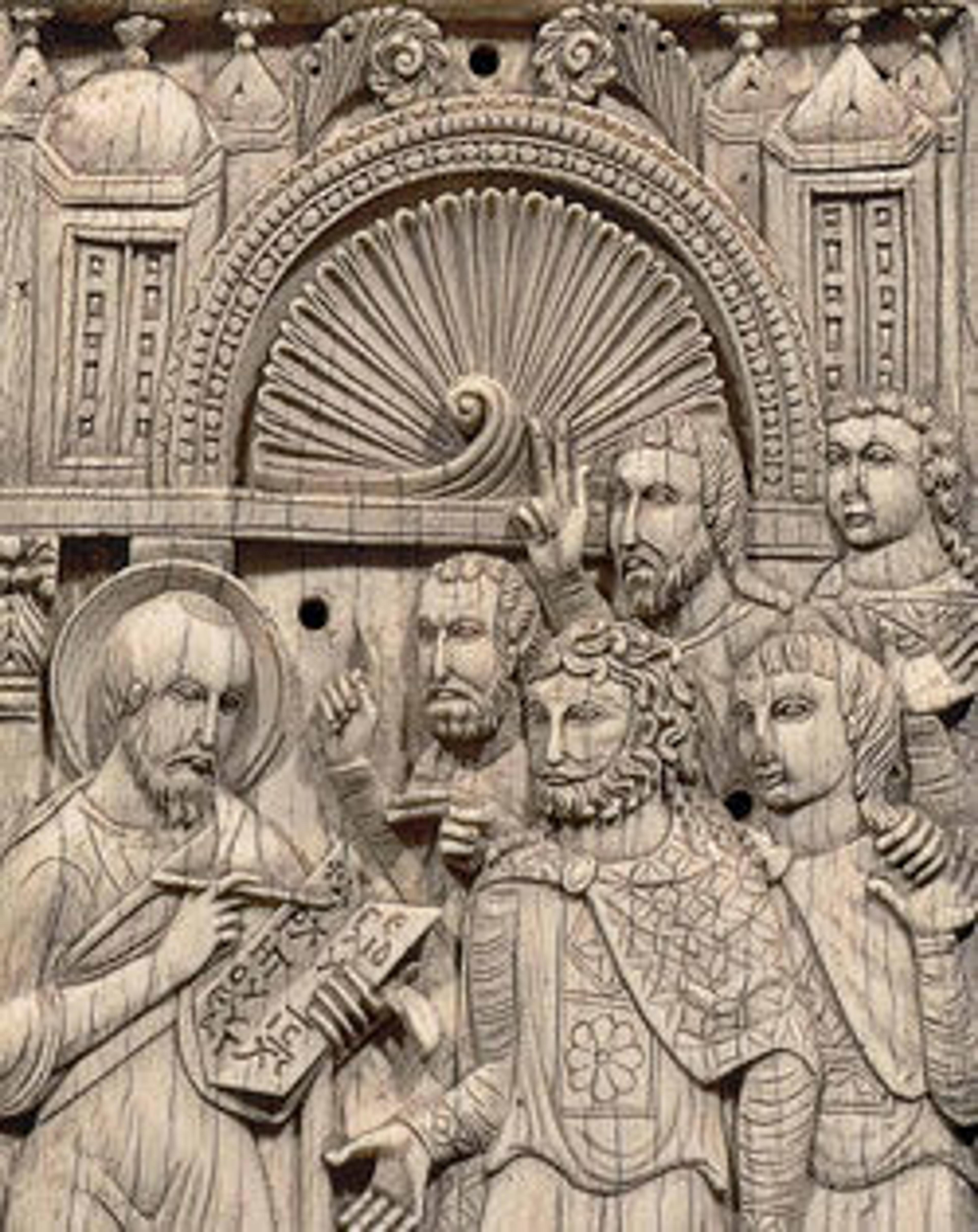The Attarouthi Treasure - Wine Strainer
Wine was poured into the chalices through a strainer to remove impurities before it was used in the Eucharist. This strainer is pierced in a pattern reproducing one type of Christogram, a monogram of the initials of Christ’s name in Greek, I (Iesous) X (Christos).
Artwork Details
- Title:The Attarouthi Treasure - Wine Strainer
- Date:500–650
- Geography:Made in Attarouthi, Syria
- Culture:Byzantine
- Medium:Silver
- Dimensions:Overall (funnel and strainer): 2 5/16 × 6 15/16 × 3 7/8 in., 6oz. (5.8 × 17.6 × 9.8 cm, 169g)
Overall (strainer only): 3 9/16 × 1 1/16 in., 1.8oz. (9.1 × 2.7 cm, 52g)
weight of funnel without strainer: 4.1oz. (117g) - Classification:Metalwork-Silver
- Credit Line:Purchase, Rogers Fund and Henry J. and Drue E. Heinz Foundation, Norbert Schimmel, and Lila Acheson Wallace Gifts, 1986
- Object Number:1986.3.14
- Curatorial Department: Medieval Art and The Cloisters
More Artwork
Research Resources
The Met provides unparalleled resources for research and welcomes an international community of students and scholars. The Met's Open Access API is where creators and researchers can connect to the The Met collection. Open Access data and public domain images are available for unrestricted commercial and noncommercial use without permission or fee.
To request images under copyright and other restrictions, please use this Image Request form.
Feedback
We continue to research and examine historical and cultural context for objects in The Met collection. If you have comments or questions about this object record, please contact us using the form below. The Museum looks forward to receiving your comments.
